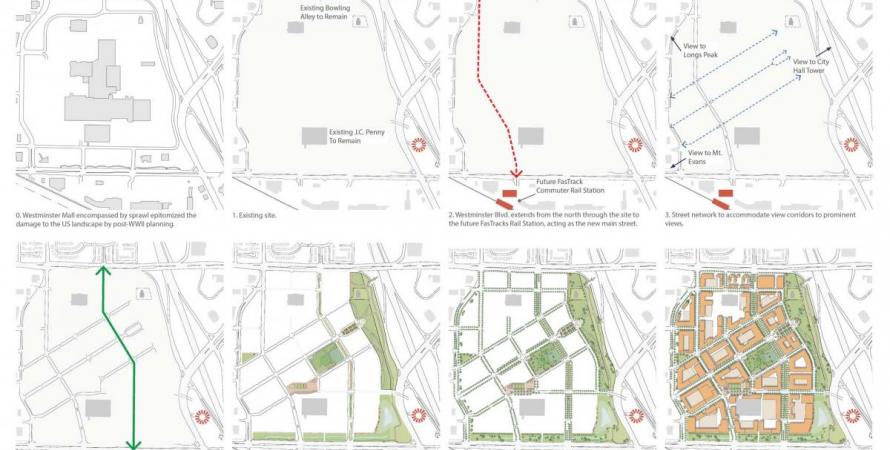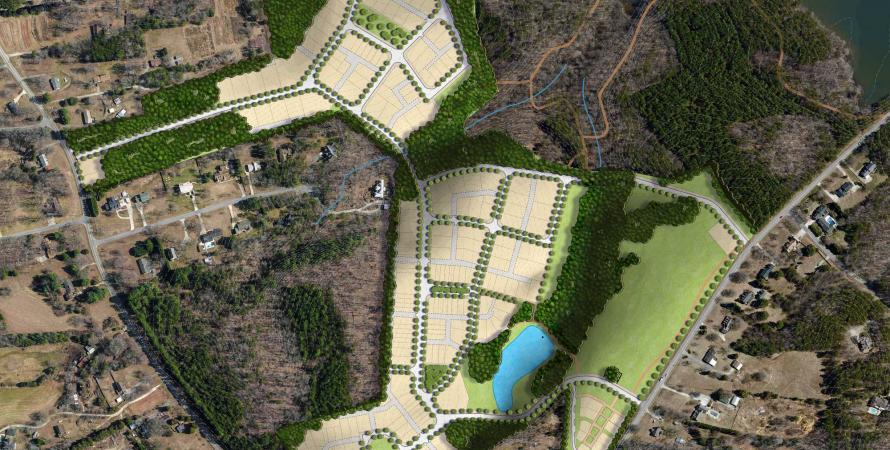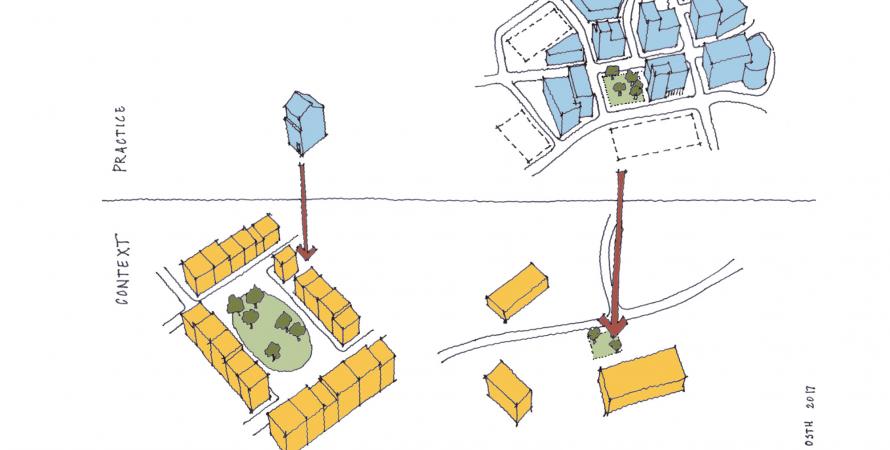-

Promoting creative retrofit solutions
States have an interest in promoting the reuse of failing suburban commercial properties. They need to promote mixed-use and walkability without stifling creative solutions.What do we do with the obsolete suburban retail properties and office parks multiplying across the US? Some states, such as New Jersey, are looking at legislative solutions to failing commercial sites, and trying to promote mixed-use and walkability, among other goals. Legislation is not my forte,...Read more -

Village plan adopted, first of eleven
The mixed-use plan for Greensboro, North Carolina, establishes a network of small blocks and the first of a series of neighborhoods for new development northwest of the historic city.Greensboro, North Carolina, City Council adopted a 79-acre new urban village plan in March. Christopher Village is the first of 11 neighborhoods on a thousand-acre site about 5 miles northwest of the city center. Dover, Kohl & Partners designed it for developer David Couch. The development...Read more -

The conversation about urban growth thoughtfully continues
The merits of fixing and repairing cities are unarguable. Planning areas outside of cities is a more fraught discussion. However, based on current urban growth trajectories, we must build new towns even as we improve existing towns and cities.Recent articles about the new community of Daybreak have stoked the debate about the worthiness of greenfield vs. infill development. At Urban Design Associates (UDA), we work in both environments. We began working Daybreak in 2006, just after the completion of Phase 1. As Principal-in-Charge of...Read more -

The potential of places like New Bedford
A quarter of the nation lives in smaller cities, which are often overlooked but more affordable, have great assets, and have room to grow.Like most coastal cities, New Bedford, Massachusetts, boasts an impressive display of boats in the downtown harbor, and waterfront restaurants thrive with a view of these vessels, docks, and the water beyond. The difference is that New Bedford’s are clearly working boats, not recreational craft...Read more